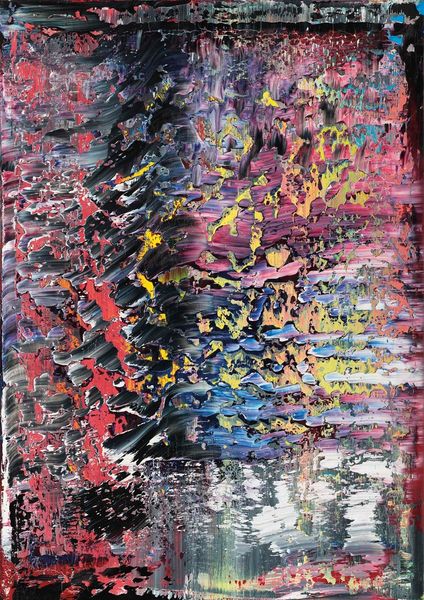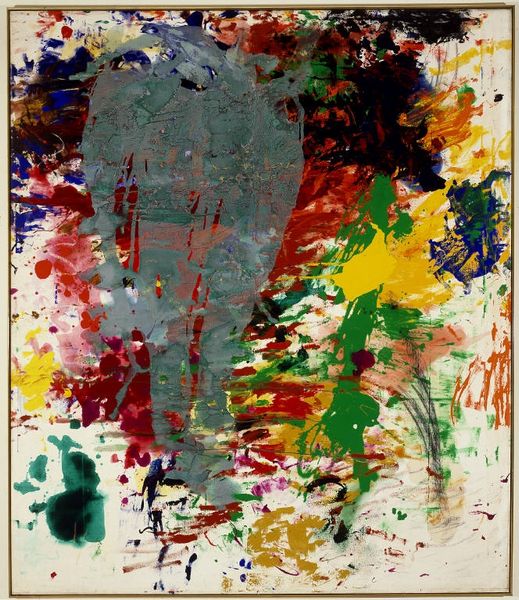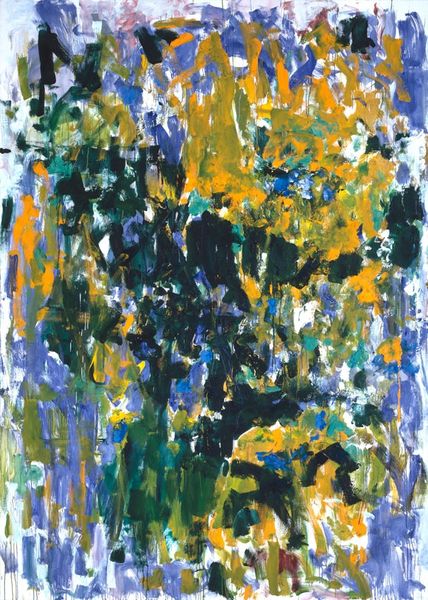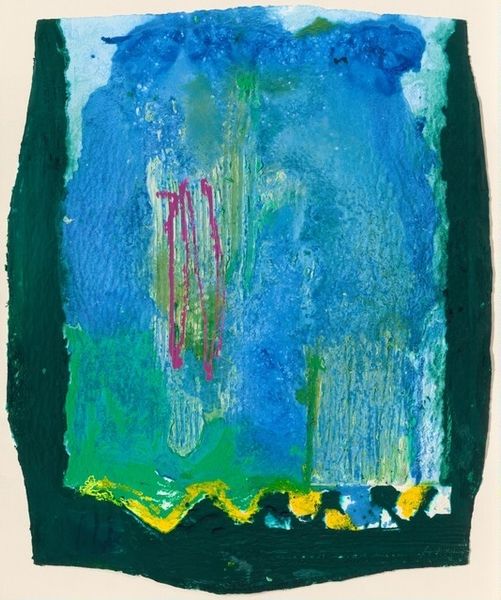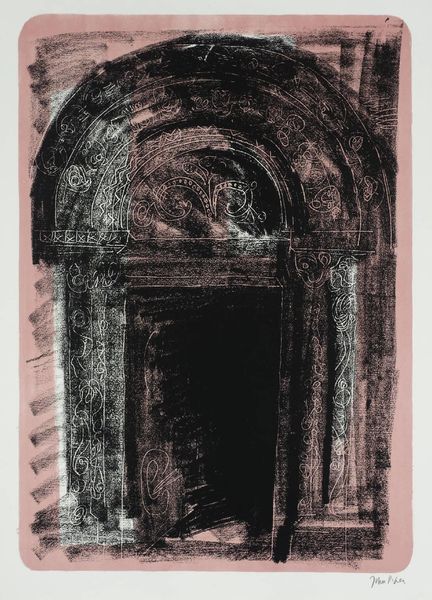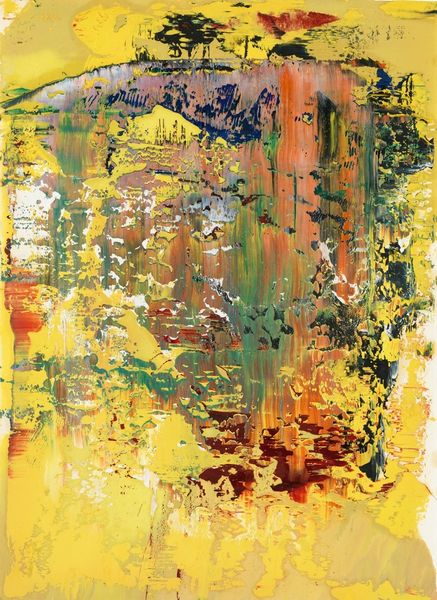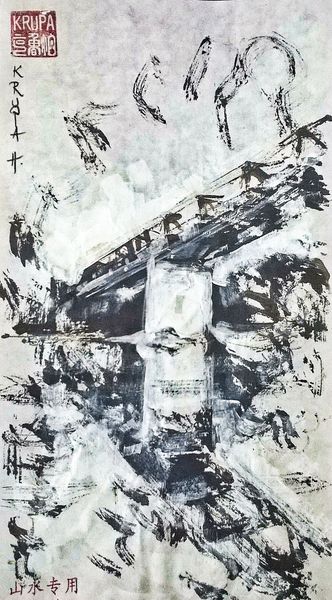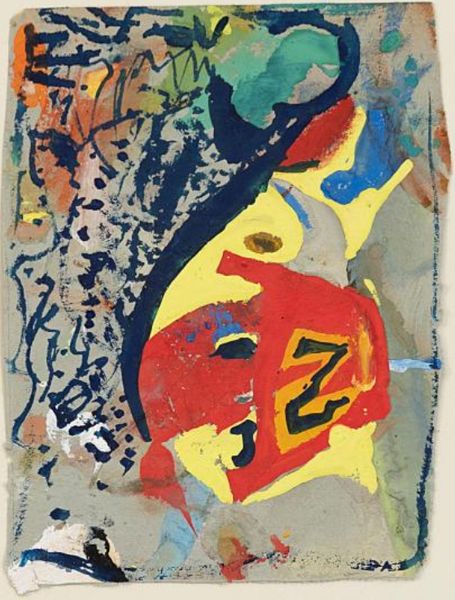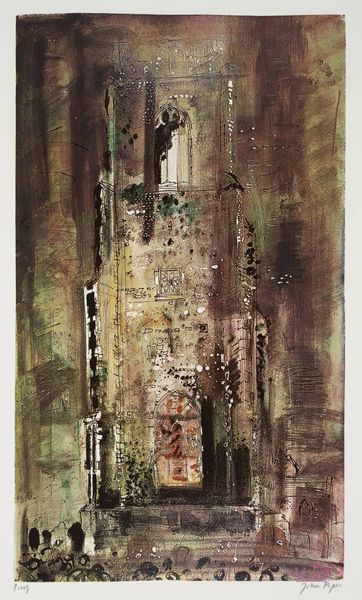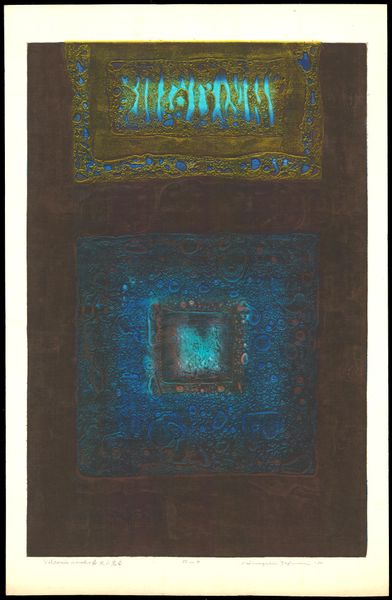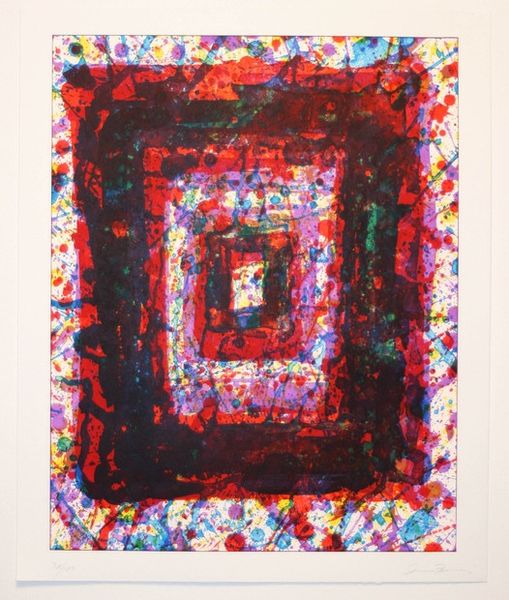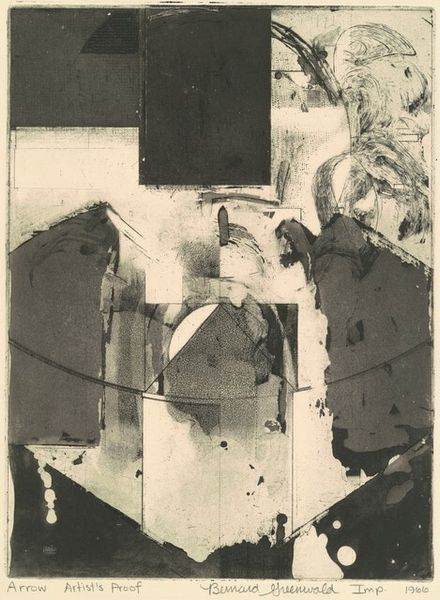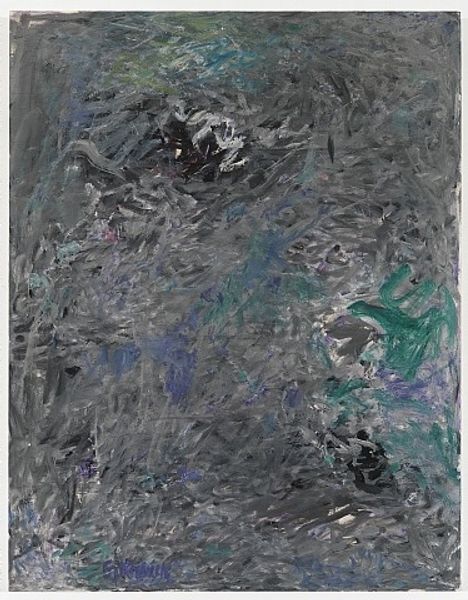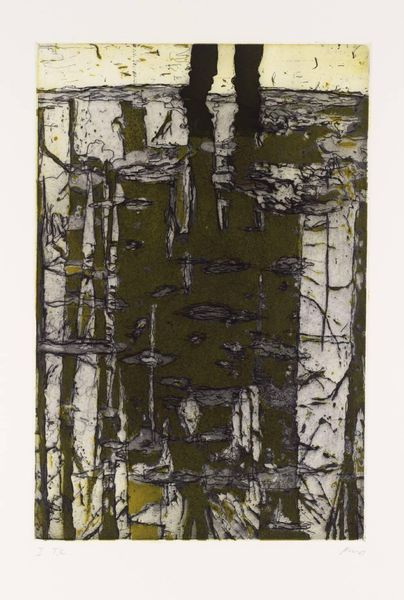
Dimensions: sheet: 101.6 × 75.57 cm (40 × 29 3/4 in.)
Copyright: National Gallery of Art: CC0 1.0
Editor: This is an "Untitled" piece from 1976-77 by Sam Francis. Looking at all this acrylic paint splashed across what I assume is a canvas, it seems so impulsive, raw even. What strikes you about this piece? Curator: What I see is a focus on the materiality itself. Look at how Francis utilizes acrylic – the fluidity, the texture created through splattering, the build-up in certain areas versus the almost ethereal transparency elsewhere. The means of production become the content. It's about deconstructing traditional notions of "high art" by embracing chance and gesture, isn't it? Editor: That makes sense. I was focusing more on the visual impact, but thinking about it as a record of process… What about the way it’s all over the canvas? Curator: The "all-over" composition dismisses traditional figure-ground relationships, challenging hierarchical structures within the art object itself. It's democratic in a way – every point on the canvas is given equal value, pushing against any imposed social order or artistic conventions that privilege certain elements over others. Consider the physical act of creation, the labor involved in applying each splatter. What kind of studio and labor is needed to produce work at this scale? Editor: I hadn't thought about it like that. It almost feels chaotic but, hearing you talk about it, I understand how deliberate each act is, a form of challenging the norm in a world where everything is about rules. Curator: Exactly! And notice how the materials themselves – acrylic, canvas – are products of specific industrial processes and economic systems. The act of painting itself becomes a form of engagement with, and perhaps a critique of, those systems. Editor: So, it's less about what it represents and more about what it *is* and how it was made? Curator: Precisely! Reflect on how abstract expressionism challenges conventional boundaries between labor, materiality, and even consumption within the art market itself. This all invites to ponder art's social context. Editor: Thanks, this makes me think of the entire era of Abstract Expressionism in a new, insightful way! Curator: My pleasure! It’s vital to consider the means and conditions under which art comes into being and its relation to the surrounding world.
Comments
No comments
Be the first to comment and join the conversation on the ultimate creative platform.
